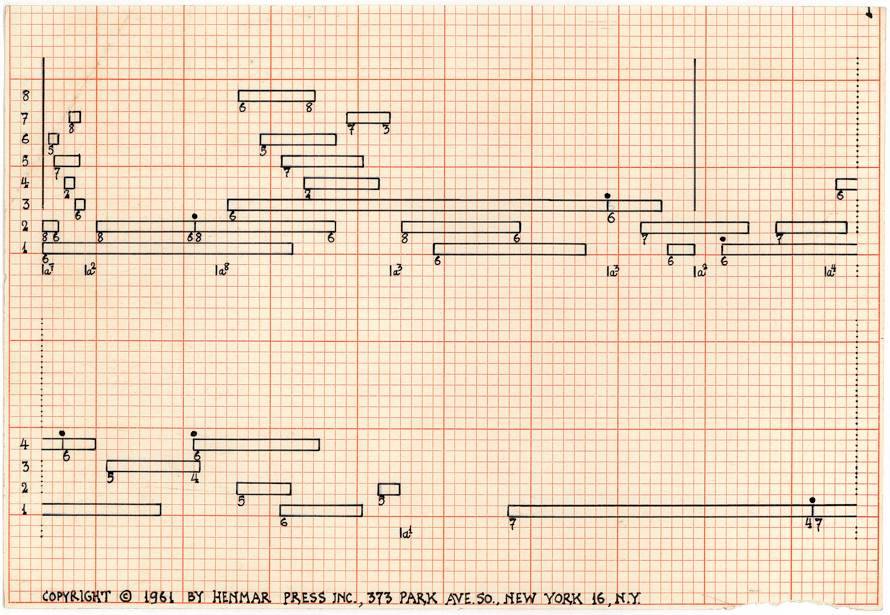The History of Electronic Music, part 3: Noises
For several years now I have been interested in electronic music, so I have decided to publish a series of brief articles in which I try to describe what in my view are decisive steps in the evolution of this kind of music, a story of entrepreneurial inventions and artistic imagination.
The electronic music revolution occurred when the concept of music expanded and began to include all possible sounds.
 |
|---|
| Original score for “Imaginary Landscape #1” |
John Cage was the first composer to use ambient sounds as musical material in his 1939 “Imaginary Landscape #1” in which he used recorded sounds played on two turntables with variable rotational speed, percussion and noise.
Among the precursors of this revolution is the italian Luigi Russolo with his “Intonarumori” (1913), although it did not include electronic instruments.
In 1948 Pierre Schaeffer, an engineer and announcer of Radiodiffusion Francaise, with a mobile recording studio, recorded near Paris the noise of the steam engines of some locomotives (including train whistles and rail noise) which he then edited to create a short composition that he called “Etude aux Chemins de fer which” was broadcast, with great success, by radio. He is also responsible for the term “concrete music” which indicates music in which composers have “concretely” to deal with sounds and not “abstractly” with symbols that represent them (as in a score).
Schaeffer had used a direct disc recording system. Around 1950 tape recorders had made their appearance on the market and the idea of using recorded sounds for artistic purposes was in the air.